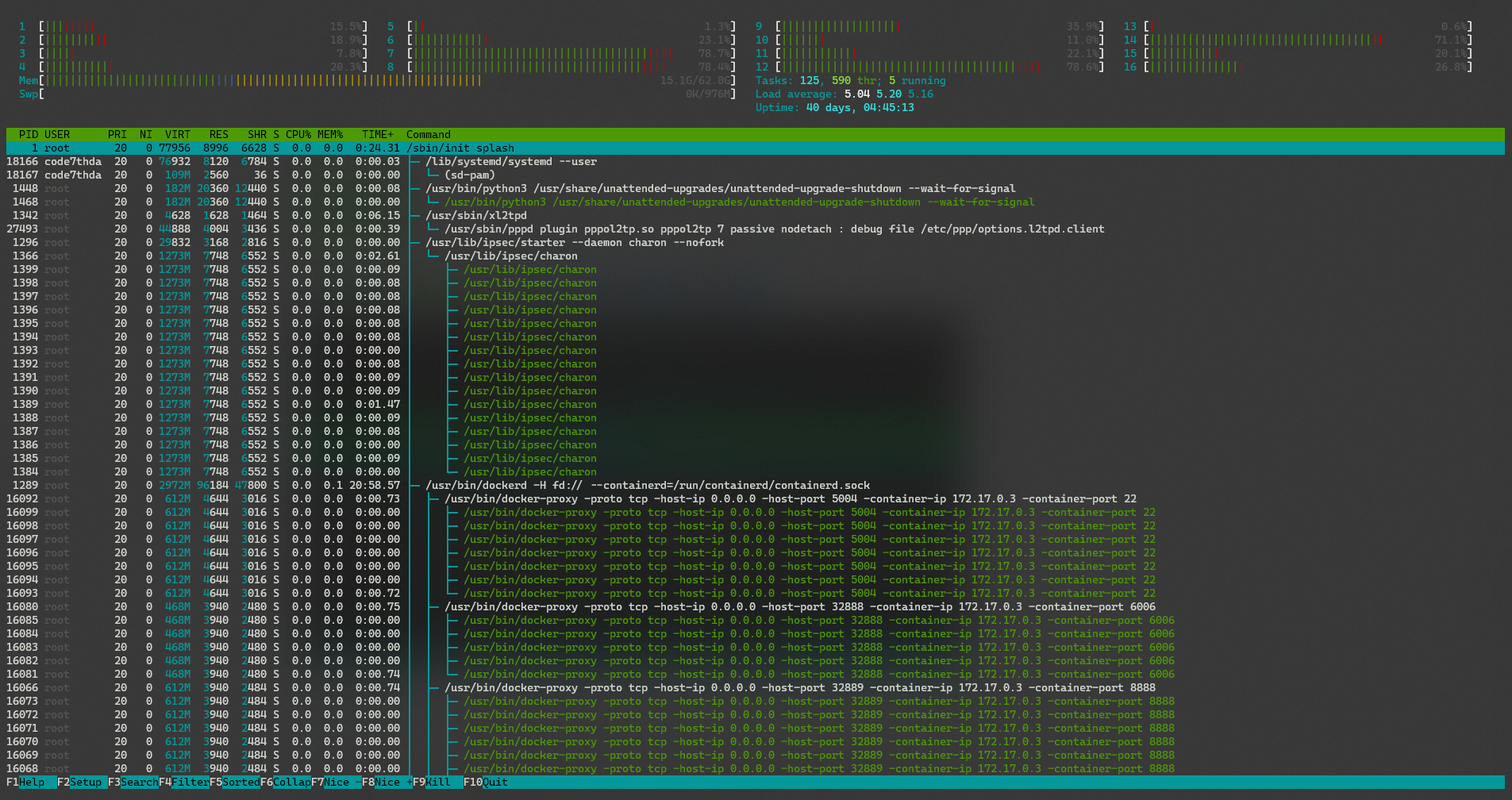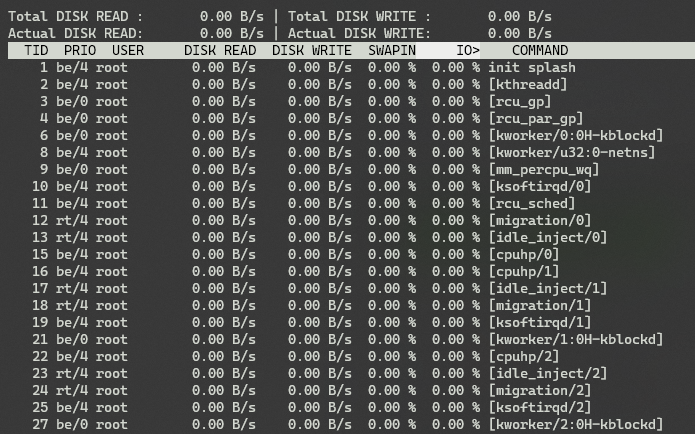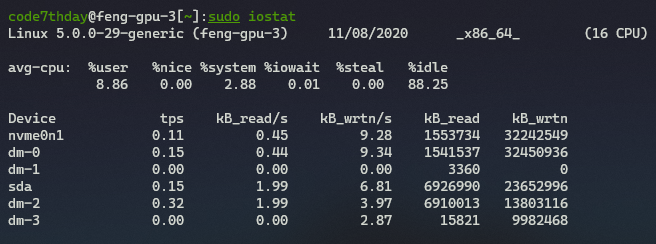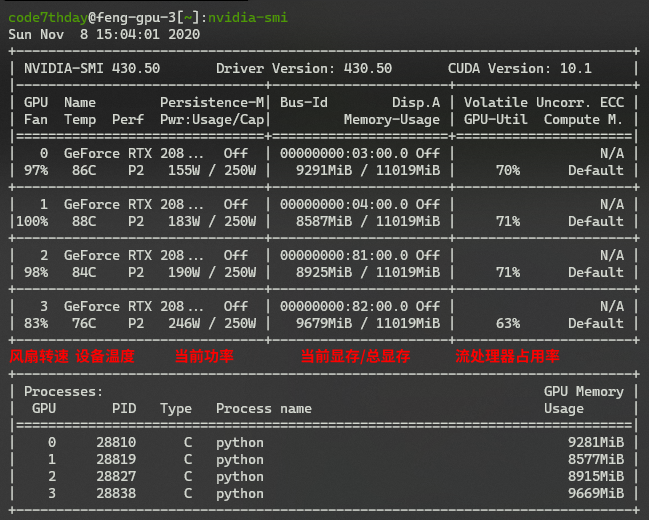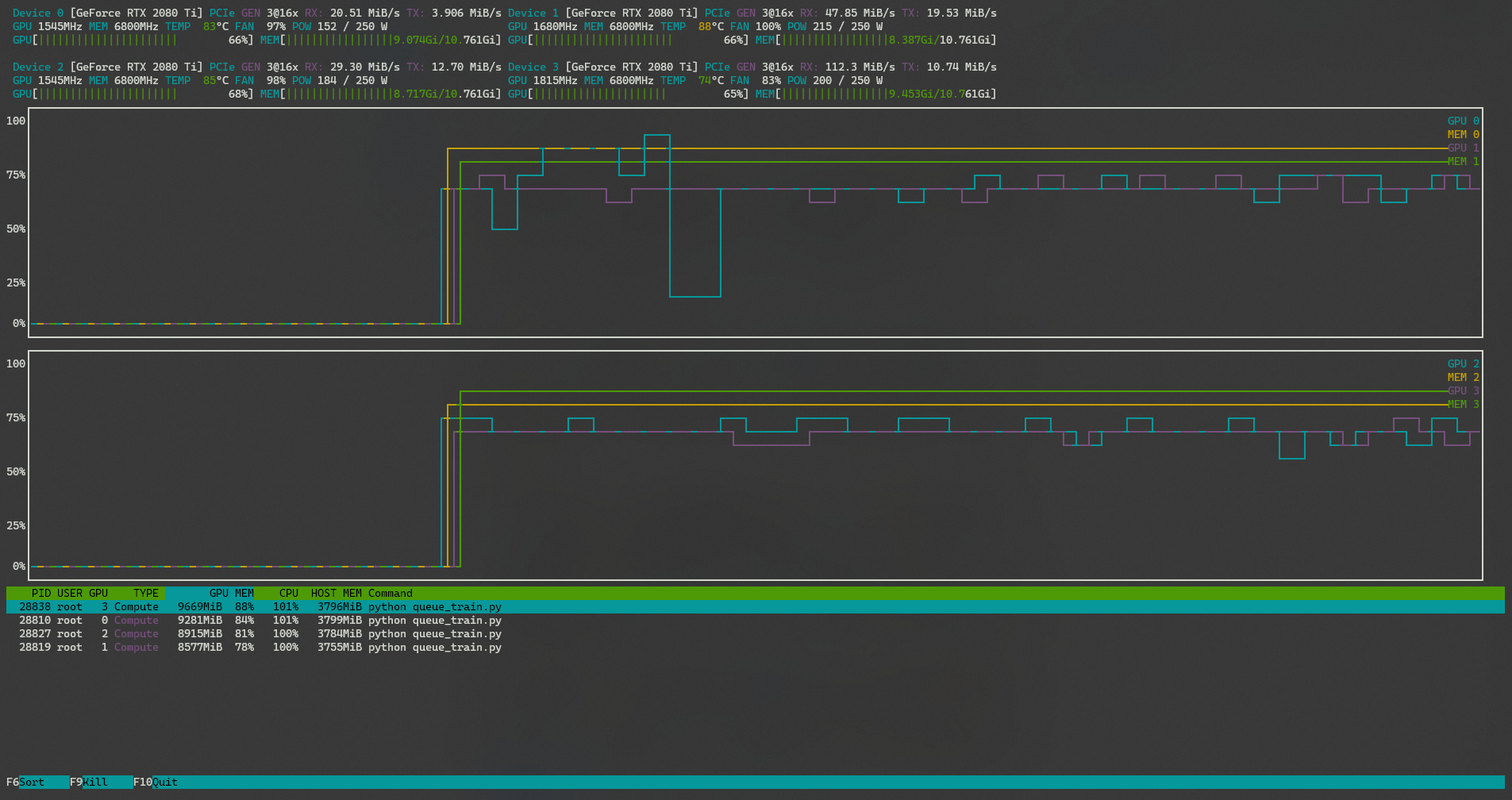最近需要 Python 实现 AES 加解密操作,在目前的 macOS Big Sur (11.4) 上使用 PyCryptodome 或 PyCrypto 都会报错:
ImportError: No module named 'Crypto'
经过测试,我们可以使用 cryptography 来实现这个功能,如下:
>>> import os
>>> from cryptography.hazmat.primitives.ciphers import Cipher, algorithms, modes
>>> key = os.urandom(32)
>>> iv = os.urandom(16)
>>> cipher = Cipher(algorithms.AES(key), modes.CBC(iv))
>>> encryptor = cipher.encryptor()
>>> ct = encryptor.update(b"a secret message") + encryptor.finalize()
>>> decryptor = cipher.decryptor()
>>> decryptor.update(ct) + decryptor.finalize()
b'a secret message'
参考 AES 算法实现代码:
#!/usr/bin/python
#
# aes.py: implements AES - Advanced Encryption Standard
# from the SlowAES project, http://code.google.com/p/slowaes/
#
# Copyright (c) 2008 Josh Davis ( http://www.josh-davis.org ),
# Alex Martelli ( http://www.aleax.it )
#
# Ported from C code written by Laurent Haan ( http://www.progressive-coding.com )
#
# Licensed under the Apache License, Version 2.0
# http://www.apache.org/licenses/
#
import os
import sys
import math
class AES(object):
'''AES funtions for a single block
'''
# Very annoying code: all is for an object, but no state is kept!
# Should just be plain functions in a AES modlule.
# valid key sizes
keySize = dict(SIZE_128=16, SIZE_192=24, SIZE_256=32)
# Rijndael S-box
sbox = [0x63, 0x7c, 0x77, 0x7b, 0xf2, 0x6b, 0x6f, 0xc5, 0x30, 0x01, 0x67,
0x2b, 0xfe, 0xd7, 0xab, 0x76, 0xca, 0x82, 0xc9, 0x7d, 0xfa, 0x59,
0x47, 0xf0, 0xad, 0xd4, 0xa2, 0xaf, 0x9c, 0xa4, 0x72, 0xc0, 0xb7,
0xfd, 0x93, 0x26, 0x36, 0x3f, 0xf7, 0xcc, 0x34, 0xa5, 0xe5, 0xf1,
0x71, 0xd8, 0x31, 0x15, 0x04, 0xc7, 0x23, 0xc3, 0x18, 0x96, 0x05,
0x9a, 0x07, 0x12, 0x80, 0xe2, 0xeb, 0x27, 0xb2, 0x75, 0x09, 0x83,
0x2c, 0x1a, 0x1b, 0x6e, 0x5a, 0xa0, 0x52, 0x3b, 0xd6, 0xb3, 0x29,
0xe3, 0x2f, 0x84, 0x53, 0xd1, 0x00, 0xed, 0x20, 0xfc, 0xb1, 0x5b,
0x6a, 0xcb, 0xbe, 0x39, 0x4a, 0x4c, 0x58, 0xcf, 0xd0, 0xef, 0xaa,
0xfb, 0x43, 0x4d, 0x33, 0x85, 0x45, 0xf9, 0x02, 0x7f, 0x50, 0x3c,
0x9f, 0xa8, 0x51, 0xa3, 0x40, 0x8f, 0x92, 0x9d, 0x38, 0xf5, 0xbc,
0xb6, 0xda, 0x21, 0x10, 0xff, 0xf3, 0xd2, 0xcd, 0x0c, 0x13, 0xec,
0x5f, 0x97, 0x44, 0x17, 0xc4, 0xa7, 0x7e, 0x3d, 0x64, 0x5d, 0x19,
0x73, 0x60, 0x81, 0x4f, 0xdc, 0x22, 0x2a, 0x90, 0x88, 0x46, 0xee,
0xb8, 0x14, 0xde, 0x5e, 0x0b, 0xdb, 0xe0, 0x32, 0x3a, 0x0a, 0x49,
0x06, 0x24, 0x5c, 0xc2, 0xd3, 0xac, 0x62, 0x91, 0x95, 0xe4, 0x79,
0xe7, 0xc8, 0x37, 0x6d, 0x8d, 0xd5, 0x4e, 0xa9, 0x6c, 0x56, 0xf4,
0xea, 0x65, 0x7a, 0xae, 0x08, 0xba, 0x78, 0x25, 0x2e, 0x1c, 0xa6,
0xb4, 0xc6, 0xe8, 0xdd, 0x74, 0x1f, 0x4b, 0xbd, 0x8b, 0x8a, 0x70,
0x3e, 0xb5, 0x66, 0x48, 0x03, 0xf6, 0x0e, 0x61, 0x35, 0x57, 0xb9,
0x86, 0xc1, 0x1d, 0x9e, 0xe1, 0xf8, 0x98, 0x11, 0x69, 0xd9, 0x8e,
0x94, 0x9b, 0x1e, 0x87, 0xe9, 0xce, 0x55, 0x28, 0xdf, 0x8c, 0xa1,
0x89, 0x0d, 0xbf, 0xe6, 0x42, 0x68, 0x41, 0x99, 0x2d, 0x0f, 0xb0,
0x54, 0xbb, 0x16]
# Rijndael Inverted S-box
rsbox = [0x52, 0x09, 0x6a, 0xd5, 0x30, 0x36, 0xa5, 0x38, 0xbf, 0x40, 0xa3,
0x9e, 0x81, 0xf3, 0xd7, 0xfb , 0x7c, 0xe3, 0x39, 0x82, 0x9b, 0x2f,
0xff, 0x87, 0x34, 0x8e, 0x43, 0x44, 0xc4, 0xde, 0xe9, 0xcb , 0x54,
0x7b, 0x94, 0x32, 0xa6, 0xc2, 0x23, 0x3d, 0xee, 0x4c, 0x95, 0x0b,
0x42, 0xfa, 0xc3, 0x4e , 0x08, 0x2e, 0xa1, 0x66, 0x28, 0xd9, 0x24,
0xb2, 0x76, 0x5b, 0xa2, 0x49, 0x6d, 0x8b, 0xd1, 0x25 , 0x72, 0xf8,
0xf6, 0x64, 0x86, 0x68, 0x98, 0x16, 0xd4, 0xa4, 0x5c, 0xcc, 0x5d,
0x65, 0xb6, 0x92 , 0x6c, 0x70, 0x48, 0x50, 0xfd, 0xed, 0xb9, 0xda,
0x5e, 0x15, 0x46, 0x57, 0xa7, 0x8d, 0x9d, 0x84 , 0x90, 0xd8, 0xab,
0x00, 0x8c, 0xbc, 0xd3, 0x0a, 0xf7, 0xe4, 0x58, 0x05, 0xb8, 0xb3,
0x45, 0x06 , 0xd0, 0x2c, 0x1e, 0x8f, 0xca, 0x3f, 0x0f, 0x02, 0xc1,
0xaf, 0xbd, 0x03, 0x01, 0x13, 0x8a, 0x6b , 0x3a, 0x91, 0x11, 0x41,
0x4f, 0x67, 0xdc, 0xea, 0x97, 0xf2, 0xcf, 0xce, 0xf0, 0xb4, 0xe6,
0x73 , 0x96, 0xac, 0x74, 0x22, 0xe7, 0xad, 0x35, 0x85, 0xe2, 0xf9,
0x37, 0xe8, 0x1c, 0x75, 0xdf, 0x6e , 0x47, 0xf1, 0x1a, 0x71, 0x1d,
0x29, 0xc5, 0x89, 0x6f, 0xb7, 0x62, 0x0e, 0xaa, 0x18, 0xbe, 0x1b ,
0xfc, 0x56, 0x3e, 0x4b, 0xc6, 0xd2, 0x79, 0x20, 0x9a, 0xdb, 0xc0,
0xfe, 0x78, 0xcd, 0x5a, 0xf4 , 0x1f, 0xdd, 0xa8, 0x33, 0x88, 0x07,
0xc7, 0x31, 0xb1, 0x12, 0x10, 0x59, 0x27, 0x80, 0xec, 0x5f , 0x60,
0x51, 0x7f, 0xa9, 0x19, 0xb5, 0x4a, 0x0d, 0x2d, 0xe5, 0x7a, 0x9f,
0x93, 0xc9, 0x9c, 0xef , 0xa0, 0xe0, 0x3b, 0x4d, 0xae, 0x2a, 0xf5,
0xb0, 0xc8, 0xeb, 0xbb, 0x3c, 0x83, 0x53, 0x99, 0x61 , 0x17, 0x2b,
0x04, 0x7e, 0xba, 0x77, 0xd6, 0x26, 0xe1, 0x69, 0x14, 0x63, 0x55,
0x21, 0x0c, 0x7d]
def getSBoxValue(self,num):
"""Retrieves a given S-Box Value"""
return self.sbox[num]
def getSBoxInvert(self,num):
"""Retrieves a given Inverted S-Box Value"""
return self.rsbox[num]
def rotate(self, word):
""" Rijndael's key schedule rotate operation.
Rotate a word eight bits to the left: eg, rotate(1d2c3a4f) == 2c3a4f1d
Word is an char list of size 4 (32 bits overall).
"""
return word[1:] + word[:1]
# Rijndael Rcon
Rcon = [0x8d, 0x01, 0x02, 0x04, 0x08, 0x10, 0x20, 0x40, 0x80, 0x1b, 0x36,
0x6c, 0xd8, 0xab, 0x4d, 0x9a, 0x2f, 0x5e, 0xbc, 0x63, 0xc6, 0x97,
0x35, 0x6a, 0xd4, 0xb3, 0x7d, 0xfa, 0xef, 0xc5, 0x91, 0x39, 0x72,
0xe4, 0xd3, 0xbd, 0x61, 0xc2, 0x9f, 0x25, 0x4a, 0x94, 0x33, 0x66,
0xcc, 0x83, 0x1d, 0x3a, 0x74, 0xe8, 0xcb, 0x8d, 0x01, 0x02, 0x04,
0x08, 0x10, 0x20, 0x40, 0x80, 0x1b, 0x36, 0x6c, 0xd8, 0xab, 0x4d,
0x9a, 0x2f, 0x5e, 0xbc, 0x63, 0xc6, 0x97, 0x35, 0x6a, 0xd4, 0xb3,
0x7d, 0xfa, 0xef, 0xc5, 0x91, 0x39, 0x72, 0xe4, 0xd3, 0xbd, 0x61,
0xc2, 0x9f, 0x25, 0x4a, 0x94, 0x33, 0x66, 0xcc, 0x83, 0x1d, 0x3a,
0x74, 0xe8, 0xcb, 0x8d, 0x01, 0x02, 0x04, 0x08, 0x10, 0x20, 0x40,
0x80, 0x1b, 0x36, 0x6c, 0xd8, 0xab, 0x4d, 0x9a, 0x2f, 0x5e, 0xbc,
0x63, 0xc6, 0x97, 0x35, 0x6a, 0xd4, 0xb3, 0x7d, 0xfa, 0xef, 0xc5,
0x91, 0x39, 0x72, 0xe4, 0xd3, 0xbd, 0x61, 0xc2, 0x9f, 0x25, 0x4a,
0x94, 0x33, 0x66, 0xcc, 0x83, 0x1d, 0x3a, 0x74, 0xe8, 0xcb, 0x8d,
0x01, 0x02, 0x04, 0x08, 0x10, 0x20, 0x40, 0x80, 0x1b, 0x36, 0x6c,
0xd8, 0xab, 0x4d, 0x9a, 0x2f, 0x5e, 0xbc, 0x63, 0xc6, 0x97, 0x35,
0x6a, 0xd4, 0xb3, 0x7d, 0xfa, 0xef, 0xc5, 0x91, 0x39, 0x72, 0xe4,
0xd3, 0xbd, 0x61, 0xc2, 0x9f, 0x25, 0x4a, 0x94, 0x33, 0x66, 0xcc,
0x83, 0x1d, 0x3a, 0x74, 0xe8, 0xcb, 0x8d, 0x01, 0x02, 0x04, 0x08,
0x10, 0x20, 0x40, 0x80, 0x1b, 0x36, 0x6c, 0xd8, 0xab, 0x4d, 0x9a,
0x2f, 0x5e, 0xbc, 0x63, 0xc6, 0x97, 0x35, 0x6a, 0xd4, 0xb3, 0x7d,
0xfa, 0xef, 0xc5, 0x91, 0x39, 0x72, 0xe4, 0xd3, 0xbd, 0x61, 0xc2,
0x9f, 0x25, 0x4a, 0x94, 0x33, 0x66, 0xcc, 0x83, 0x1d, 0x3a, 0x74,
0xe8, 0xcb ]
def getRconValue(self, num):
"""Retrieves a given Rcon Value"""
return self.Rcon[num]
def core(self, word, iteration):
"""Key schedule core."""
# rotate the 32-bit word 8 bits to the left
word = self.rotate(word)
# apply S-Box substitution on all 4 parts of the 32-bit word
for i in range(4):
word[i] = self.getSBoxValue(word[i])
# XOR the output of the rcon operation with i to the first part
# (leftmost) only
word[0] = word[0] ^ self.getRconValue(iteration)
return word
def expandKey(self, key, size, expandedKeySize):
"""Rijndael's key expansion.
Expands an 128,192,256 key into an 176,208,240 bytes key
expandedKey is a char list of large enough size,
key is the non-expanded key.
"""
# current expanded keySize, in bytes
currentSize = 0
rconIteration = 1
expandedKey = [0] * expandedKeySize
# set the 16, 24, 32 bytes of the expanded key to the input key
for j in range(size):
expandedKey[j] = key[j]
currentSize += size
while currentSize < expandedKeySize:
# assign the previous 4 bytes to the temporary value t
t = expandedKey[currentSize-4:currentSize]
# every 16,24,32 bytes we apply the core schedule to t
# and increment rconIteration afterwards
if currentSize % size == 0:
t = self.core(t, rconIteration)
rconIteration += 1
# For 256-bit keys, we add an extra sbox to the calculation
if size == self.keySize["SIZE_256"] and ((currentSize % size) == 16):
for l in range(4): t[l] = self.getSBoxValue(t[l])
# We XOR t with the four-byte block 16,24,32 bytes before the new
# expanded key. This becomes the next four bytes in the expanded
# key.
for m in range(4):
expandedKey[currentSize] = expandedKey[currentSize - size] ^ \
t[m]
currentSize += 1
return expandedKey
def addRoundKey(self, state, roundKey):
"""Adds (XORs) the round key to the state."""
for i in range(16):
state[i] ^= roundKey[i]
return state
def createRoundKey(self, expandedKey, roundKeyPointer):
"""Create a round key.
Creates a round key from the given expanded key and the
position within the expanded key.
"""
roundKey = [0] * 16
for i in range(4):
for j in range(4):
roundKey[j*4+i] = expandedKey[roundKeyPointer + i*4 + j]
return roundKey
def galois_multiplication(self, a, b):
"""Galois multiplication of 8 bit characters a and b."""
p = 0
for counter in range(8):
if b & 1: p ^= a
hi_bit_set = a & 0x80
a <<= 1
# keep a 8 bit
a &= 0xFF
if hi_bit_set:
a ^= 0x1b
b >>= 1
return p
#
# substitute all the values from the state with the value in the SBox
# using the state value as index for the SBox
#
def subBytes(self, state, isInv):
if isInv: getter = self.getSBoxInvert
else: getter = self.getSBoxValue
for i in range(16): state[i] = getter(state[i])
return state
# iterate over the 4 rows and call shiftRow() with that row
def shiftRows(self, state, isInv):
for i in range(4):
state = self.shiftRow(state, i*4, i, isInv)
return state
# each iteration shifts the row to the left by 1
def shiftRow(self, state, statePointer, nbr, isInv):
for i in range(nbr):
if isInv:
state[statePointer:statePointer+4] = \
state[statePointer+3:statePointer+4] + \
state[statePointer:statePointer+3]
else:
state[statePointer:statePointer+4] = \
state[statePointer+1:statePointer+4] + \
state[statePointer:statePointer+1]
return state
# galois multiplication of the 4x4 matrix
def mixColumns(self, state, isInv):
# iterate over the 4 columns
for i in range(4):
# construct one column by slicing over the 4 rows
column = state[i:i+16:4]
# apply the mixColumn on one column
column = self.mixColumn(column, isInv)
# put the values back into the state
state[i:i+16:4] = column
return state
# galois multiplication of 1 column of the 4x4 matrix
def mixColumn(self, column, isInv):
if isInv: mult = [14, 9, 13, 11]
else: mult = [2, 1, 1, 3]
cpy = list(column)
g = self.galois_multiplication
column[0] = g(cpy[0], mult[0]) ^ g(cpy[3], mult[1]) ^ \
g(cpy[2], mult[2]) ^ g(cpy[1], mult[3])
column[1] = g(cpy[1], mult[0]) ^ g(cpy[0], mult[1]) ^ \
g(cpy[3], mult[2]) ^ g(cpy[2], mult[3])
column[2] = g(cpy[2], mult[0]) ^ g(cpy[1], mult[1]) ^ \
g(cpy[0], mult[2]) ^ g(cpy[3], mult[3])
column[3] = g(cpy[3], mult[0]) ^ g(cpy[2], mult[1]) ^ \
g(cpy[1], mult[2]) ^ g(cpy[0], mult[3])
return column
# applies the 4 operations of the forward round in sequence
def aes_round(self, state, roundKey):
state = self.subBytes(state, False)
state = self.shiftRows(state, False)
state = self.mixColumns(state, False)
state = self.addRoundKey(state, roundKey)
return state
# applies the 4 operations of the inverse round in sequence
def aes_invRound(self, state, roundKey):
state = self.shiftRows(state, True)
state = self.subBytes(state, True)
state = self.addRoundKey(state, roundKey)
state = self.mixColumns(state, True)
return state
# Perform the initial operations, the standard round, and the final
# operations of the forward aes, creating a round key for each round
def aes_main(self, state, expandedKey, nbrRounds):
state = self.addRoundKey(state, self.createRoundKey(expandedKey, 0))
i = 1
while i < nbrRounds:
state = self.aes_round(state,
self.createRoundKey(expandedKey, 16*i))
i += 1
state = self.subBytes(state, False)
state = self.shiftRows(state, False)
state = self.addRoundKey(state,
self.createRoundKey(expandedKey, 16*nbrRounds))
return state
# Perform the initial operations, the standard round, and the final
# operations of the inverse aes, creating a round key for each round
def aes_invMain(self, state, expandedKey, nbrRounds):
state = self.addRoundKey(state,
self.createRoundKey(expandedKey, 16*nbrRounds))
i = nbrRounds - 1
while i > 0:
state = self.aes_invRound(state,
self.createRoundKey(expandedKey, 16*i))
i -= 1
state = self.shiftRows(state, True)
state = self.subBytes(state, True)
state = self.addRoundKey(state, self.createRoundKey(expandedKey, 0))
return state
# encrypts a 128 bit input block against the given key of size specified
def encrypt(self, iput, key, size):
output = [0] * 16
# the number of rounds
nbrRounds = 0
# the 128 bit block to encode
block = [0] * 16
# set the number of rounds
if size == self.keySize["SIZE_128"]: nbrRounds = 10
elif size == self.keySize["SIZE_192"]: nbrRounds = 12
elif size == self.keySize["SIZE_256"]: nbrRounds = 14
else: return None
# the expanded keySize
expandedKeySize = 16*(nbrRounds+1)
# Set the block values, for the block:
# a0,0 a0,1 a0,2 a0,3
# a1,0 a1,1 a1,2 a1,3
# a2,0 a2,1 a2,2 a2,3
# a3,0 a3,1 a3,2 a3,3
# the mapping order is a0,0 a1,0 a2,0 a3,0 a0,1 a1,1 ... a2,3 a3,3
#
# iterate over the columns
for i in range(4):
# iterate over the rows
for j in range(4):
block[(i+(j*4))] = iput[(i*4)+j]
# expand the key into an 176, 208, 240 bytes key
# the expanded key
expandedKey = self.expandKey(key, size, expandedKeySize)
# encrypt the block using the expandedKey
block = self.aes_main(block, expandedKey, nbrRounds)
# unmap the block again into the output
for k in range(4):
# iterate over the rows
for l in range(4):
output[(k*4)+l] = block[(k+(l*4))]
return output
# decrypts a 128 bit input block against the given key of size specified
def decrypt(self, iput, key, size):
output = [0] * 16
# the number of rounds
nbrRounds = 0
# the 128 bit block to decode
block = [0] * 16
# set the number of rounds
if size == self.keySize["SIZE_128"]: nbrRounds = 10
elif size == self.keySize["SIZE_192"]: nbrRounds = 12
elif size == self.keySize["SIZE_256"]: nbrRounds = 14
else: return None
# the expanded keySize
expandedKeySize = 16*(nbrRounds+1)
# Set the block values, for the block:
# a0,0 a0,1 a0,2 a0,3
# a1,0 a1,1 a1,2 a1,3
# a2,0 a2,1 a2,2 a2,3
# a3,0 a3,1 a3,2 a3,3
# the mapping order is a0,0 a1,0 a2,0 a3,0 a0,1 a1,1 ... a2,3 a3,3
# iterate over the columns
for i in range(4):
# iterate over the rows
for j in range(4):
block[(i+(j*4))] = iput[(i*4)+j]
# expand the key into an 176, 208, 240 bytes key
expandedKey = self.expandKey(key, size, expandedKeySize)
# decrypt the block using the expandedKey
block = self.aes_invMain(block, expandedKey, nbrRounds)
# unmap the block again into the output
for k in range(4):
# iterate over the rows
for l in range(4):
output[(k*4)+l] = block[(k+(l*4))]
return output
class AESModeOfOperation(object):
'''Handles AES with plaintext consistingof multiple blocks.
Choice of block encoding modes: OFT, CFB, CBC
'''
# Very annoying code: all is for an object, but no state is kept!
# Should just be plain functions in an AES_BlockMode module.
aes = AES()
# structure of supported modes of operation
modeOfOperation = dict(OFB=0, CFB=1, CBC=2)
# converts a 16 character string into a number array
def convertString(self, string, start, end, mode):
if end - start > 16: end = start + 16
if mode == self.modeOfOperation["CBC"]: ar = [0] * 16
else: ar = []
i = start
j = 0
while len(ar) < end - start:
ar.append(0)
while i < end:
ar[j] = ord(string[i])
j += 1
i += 1
return ar
# Mode of Operation Encryption
# stringIn - Input String
# mode - mode of type modeOfOperation
# hexKey - a hex key of the bit length size
# size - the bit length of the key
# hexIV - the 128 bit hex Initilization Vector
def encrypt(self, stringIn, mode, key, size, IV):
if len(key) % size:
return None
if len(IV) % 16:
return None
# the AES input/output
plaintext = []
iput = [0] * 16
output = []
ciphertext = [0] * 16
# the output cipher string
cipherOut = []
# char firstRound
firstRound = True
if stringIn != None:
for j in range(int(math.ceil(float(len(stringIn))/16))):
start = j*16
end = j*16+16
if end > len(stringIn):
end = len(stringIn)
plaintext = self.convertString(stringIn, start, end, mode)
# print 'PT@%s:%s' % (j, plaintext)
if mode == self.modeOfOperation["CFB"]:
if firstRound:
output = self.aes.encrypt(IV, key, size)
firstRound = False
else:
output = self.aes.encrypt(iput, key, size)
for i in range(16):
if len(plaintext)-1 < i:
ciphertext[i] = 0 ^ output[i]
elif len(output)-1 < i:
ciphertext[i] = plaintext[i] ^ 0
elif len(plaintext)-1 < i and len(output) < i:
ciphertext[i] = 0 ^ 0
else:
ciphertext[i] = plaintext[i] ^ output[i]
for k in range(end-start):
cipherOut.append(ciphertext[k])
iput = ciphertext
elif mode == self.modeOfOperation["OFB"]:
if firstRound:
output = self.aes.encrypt(IV, key, size)
firstRound = False
else:
output = self.aes.encrypt(iput, key, size)
for i in range(16):
if len(plaintext)-1 < i:
ciphertext[i] = 0 ^ output[i]
elif len(output)-1 < i:
ciphertext[i] = plaintext[i] ^ 0
elif len(plaintext)-1 < i and len(output) < i:
ciphertext[i] = 0 ^ 0
else:
ciphertext[i] = plaintext[i] ^ output[i]
for k in range(end-start):
cipherOut.append(ciphertext[k])
iput = output
elif mode == self.modeOfOperation["CBC"]:
for i in range(16):
if firstRound:
iput[i] = plaintext[i] ^ IV[i]
else:
iput[i] = plaintext[i] ^ ciphertext[i]
# print 'IP@%s:%s' % (j, iput)
firstRound = False
ciphertext = self.aes.encrypt(iput, key, size)
# always 16 bytes because of the padding for CBC
for k in range(16):
cipherOut.append(ciphertext[k])
return mode, len(stringIn), cipherOut
# Mode of Operation Decryption
# cipherIn - Encrypted String
# originalsize - The unencrypted string length - required for CBC
# mode - mode of type modeOfOperation
# key - a number array of the bit length size
# size - the bit length of the key
# IV - the 128 bit number array Initilization Vector
def decrypt(self, cipherIn, originalsize, mode, key, size, IV):
# cipherIn = unescCtrlChars(cipherIn)
if len(key) % size:
return None
if len(IV) % 16:
return None
# the AES input/output
ciphertext = []
iput = []
output = []
plaintext = [0] * 16
# the output plain text character list
chrOut = []
# char firstRound
firstRound = True
if cipherIn != None:
for j in range(int(math.ceil(float(len(cipherIn))/16))):
start = j*16
end = j*16+16
if j*16+16 > len(cipherIn):
end = len(cipherIn)
ciphertext = cipherIn[start:end]
if mode == self.modeOfOperation["CFB"]:
if firstRound:
output = self.aes.encrypt(IV, key, size)
firstRound = False
else:
output = self.aes.encrypt(iput, key, size)
for i in range(16):
if len(output)-1 < i:
plaintext[i] = 0 ^ ciphertext[i]
elif len(ciphertext)-1 < i:
plaintext[i] = output[i] ^ 0
elif len(output)-1 < i and len(ciphertext) < i:
plaintext[i] = 0 ^ 0
else:
plaintext[i] = output[i] ^ ciphertext[i]
for k in range(end-start):
chrOut.append(chr(plaintext[k]))
iput = ciphertext
elif mode == self.modeOfOperation["OFB"]:
if firstRound:
output = self.aes.encrypt(IV, key, size)
firstRound = False
else:
output = self.aes.encrypt(iput, key, size)
for i in range(16):
if len(output)-1 < i:
plaintext[i] = 0 ^ ciphertext[i]
elif len(ciphertext)-1 < i:
plaintext[i] = output[i] ^ 0
elif len(output)-1 < i and len(ciphertext) < i:
plaintext[i] = 0 ^ 0
else:
plaintext[i] = output[i] ^ ciphertext[i]
for k in range(end-start):
chrOut.append(chr(plaintext[k]))
iput = output
elif mode == self.modeOfOperation["CBC"]:
output = self.aes.decrypt(ciphertext, key, size)
for i in range(16):
if firstRound:
plaintext[i] = IV[i] ^ output[i]
else:
plaintext[i] = iput[i] ^ output[i]
firstRound = False
if originalsize is not None and originalsize < end:
for k in range(originalsize-start):
chrOut.append(chr(plaintext[k]))
else:
for k in range(end-start):
chrOut.append(chr(plaintext[k]))
iput = ciphertext
return "".join(chrOut)
def append_PKCS7_padding(s):
"""return s padded to a multiple of 16-bytes by PKCS7 padding"""
numpads = 16 - (len(s)%16)
return s + numpads*chr(numpads)
def strip_PKCS7_padding(s):
"""return s stripped of PKCS7 padding"""
if len(s)%16 or not s:
raise ValueError("String of len %d can't be PCKS7-padded" % len(s))
numpads = ord(s[-1])
if numpads > 16:
raise ValueError("String ending with %r can't be PCKS7-padded" % s[-1])
return s[:-numpads]
def encryptData(key, data, mode=AESModeOfOperation.modeOfOperation["CBC"]):
"""encrypt `data` using `key`
`key` should be a string of bytes.
returned cipher is a string of bytes prepended with the initialization
vector.
"""
key = map(ord, key)
if mode == AESModeOfOperation.modeOfOperation["CBC"]:
data = append_PKCS7_padding(data)
keysize = len(key)
assert keysize in AES.keySize.values(), 'invalid key size: %s' % keysize
# create a new iv using random data
iv = [ord(i) for i in os.urandom(16)]
moo = AESModeOfOperation()
(mode, length, ciph) = moo.encrypt(data, mode, key, keysize, iv)
# With padding, the original length does not need to be known. It's a bad
# idea to store the original message length.
# prepend the iv.
return ''.join(map(chr, iv)) + ''.join(map(chr, ciph))
def decryptData(key, data, mode=AESModeOfOperation.modeOfOperation["CBC"]):
"""decrypt `data` using `key`
`key` should be a string of bytes.
`data` should have the initialization vector prepended as a string of
ordinal values.
"""
key = map(ord, key)
keysize = len(key)
assert keysize in AES.keySize.values(), 'invalid key size: %s' % keysize
# iv is first 16 bytes
iv = map(ord, data[:16])
data = map(ord, data[16:])
moo = AESModeOfOperation()
decr = moo.decrypt(data, None, mode, key, keysize, iv)
if mode == AESModeOfOperation.modeOfOperation["CBC"]:
decr = strip_PKCS7_padding(decr)
return decr
def generateRandomKey(keysize):
"""Generates a key from random data of length `keysize`.
The returned key is a string of bytes.
"""
if keysize not in (16, 24, 32):
emsg = 'Invalid keysize, %s. Should be one of (16, 24, 32).'
raise ValueError, emsg % keysize
return os.urandom(keysize)
def testStr(cleartext, keysize=16, modeName = "CBC"):
'''Test with random key, choice of mode.'''
print 'Random key test', 'Mode:', modeName
print 'cleartext:', cleartext
key = generateRandomKey(keysize)
print 'Key:', [ord(x) for x in key]
mode = AESModeOfOperation.modeOfOperation[modeName]
cipher = encryptData(key, cleartext, mode)
print 'Cipher:', [ord(x) for x in cipher]
decr = decryptData(key, cipher, mode)
print 'Decrypted:', decr
if __name__ == "__main__":
moo = AESModeOfOperation()
cleartext = "This is a test with several blocks!"
cypherkey = [143,194,34,208,145,203,230,143,177,246,97,206,145,92,255,84]
iv = [103,35,148,239,76,213,47,118,255,222,123,176,106,134,98,92]
mode, orig_len, ciph = moo.encrypt(cleartext, moo.modeOfOperation["CBC"],
cypherkey, moo.aes.keySize["SIZE_128"], iv)
print 'm=%s, ol=%s (%s), ciph=%s' % (mode, orig_len, len(cleartext), ciph)
decr = moo.decrypt(ciph, orig_len, mode, cypherkey,
moo.aes.keySize["SIZE_128"], iv)
print decr
testStr(cleartext, 16, "CBC")
参考链接
